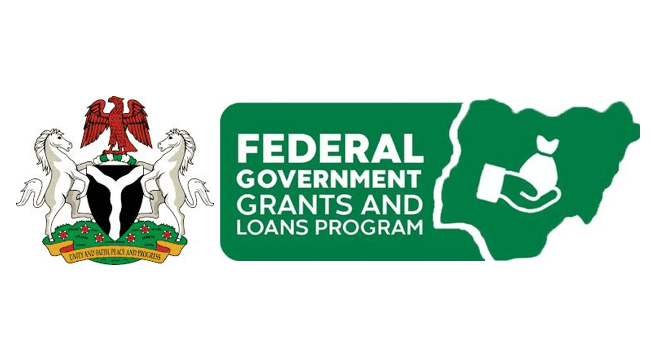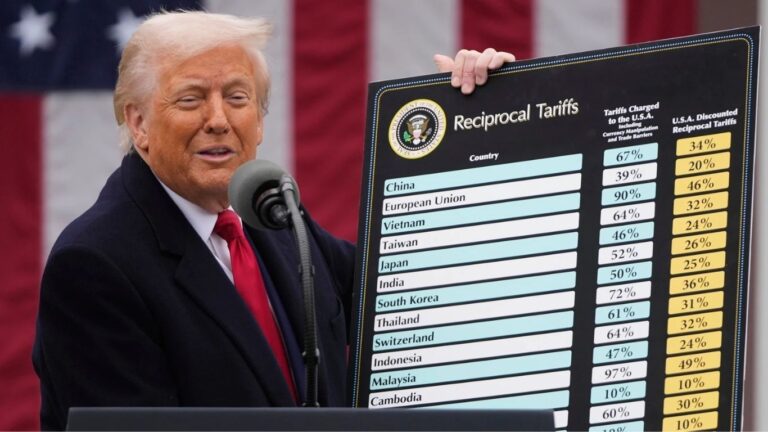In a stunning and unexpected move, the White House announced that all federal grants and loans would be paused indefinitely. This decision has caused widespread confusion and concern across various sectors, from businesses to universities and nonprofits, all of which rely on these funds for their operations. The halt has left many wondering what the future holds for programs dependent on federal financial support.
The Unexpected Federal Funding Freeze
In this blog post, we will dive deep into the implications of this pause on federal grants and loans, its causes, and how different sectors can navigate this challenging period. By the end of this post, you’ll have a comprehensive understanding of the situation and how you can adapt moving forward.
The Background of Federal Grants and Loans
Before exploring the pause itself, it’s essential to understand what federal grants and loans are and why they matter.
What Are Federal Grants and Loans?

Federal grants and loans are funds provided by the U.S. government to help businesses, institutions, individuals, and other organizations achieve specific goals. Grants are typically non-repayable, whereas loans must be paid back with interest over time. These funds are often directed toward areas such as:
- Research and Development: Universities and research institutions often rely on federal grants for scientific discoveries and technological advancements.
- Small Business Support: Many startups and small businesses depend on federal loans and grants to help with initial funding and expansion.
- Public Services: Nonprofits, schools, and local governments receive grants for educational programs, infrastructure improvements, and social services.
- Disaster Relief: During emergencies such as natural disasters, the federal government issues grants to assist with recovery efforts.
These grants and loans form a critical component of the U.S. economy, fostering growth, innovation, and community development. Without them, many sectors would face severe financial strain.
The White House’s Decision: A Shocking Pause on Federal Funding
On the White House made a formal announcement that all federal grants and loans would be paused until further notice. This decision came as a surprise to many, particularly since the U.S. government has been a consistent source of funding for key sectors in the economy.
The pause has raised multiple questions:
- Why did the White House make this decision?
- How long will this funding freeze last?
- What will be the long-term effects on businesses, educational institutions, and local governments?
To answer these questions, we need to examine the causes behind this unusual move and its potential ramifications.
The Causes Behind the Federal Grants and Loans Freeze
There are several factors that may have led to this unprecedented halt in federal funding:

1. Budgetary Constraints and Fiscal Policies
One of the primary reasons for the suspension of federal grants and loans could be budgetary constraints. As the U.S. government faces rising debt levels and fiscal challenges, decisions to restrict federal spending become more frequent. Budgetary shortfalls may have pushed the White House to make the difficult decision to pause these funds temporarily.
According to a report by the Congressional Budget Office (CBO), federal spending has been growing at an unsustainable rate, contributing to a significant increase in the national deficit. The White House may be attempting to control spending in the short term to ensure long-term fiscal responsibility.
2. Ongoing Economic Uncertainty
The economic climate in the U.S. remains volatile due to various factors, including inflation, supply chain disruptions, and geopolitical tensions. In light of this uncertainty, the government may have paused funding to reassess the allocation of financial resources and ensure that the country is not over-committing to spending during this precarious time.
3. Administrative Overhaul and Policy Shifts
Another possibility is an overhaul of federal policies regarding grants and loans. The White House may be preparing to introduce new guidelines or frameworks for distributing these funds more efficiently. A significant policy shift could require a temporary pause in the flow of funds as the administration adjusts its approach.
Immediate Impact on Key Sectors
The halt in federal grants and loans has had widespread effects across various sectors. Here’s how it is affecting the most critical areas:
1. Higher Education and Research Institutions
Universities and research organizations often rely heavily on federal grants to fund scientific research and academic programs. For example, many public universities have large research budgets funded by federal agencies such as the National Institutes of Health (NIH) or the National Science Foundation (NSF).
The pause on these grants means that ongoing research projects, which can range from medical studies to technology development, are at risk of being delayed or canceled. This disruption could have significant consequences for the advancement of knowledge and innovation.
Example: The Impact on Medical Research
Researchers studying diseases such as cancer or Alzheimer’s depend on federal funding to carry out clinical trials and experiments. The freeze on grants could slow down critical discoveries that have the potential to improve public health.
2. Small Business and Entrepreneurship
Small businesses often rely on federal loans, such as those provided through the Small Business Administration (SBA), to start or expand their operations. The temporary pause in loans has left many entrepreneurs in limbo, unsure of how to proceed with their plans.
Example: The SBA Disaster Loans
In the wake of natural disasters, small businesses often turn to federal loans to help them recover. The freeze on these loans means that businesses affected by recent floods, hurricanes, or wildfires may struggle to rebuild, prolonging their recovery and affecting their local economies.
3. Local Governments and Public Services
Local governments also depend on federal grants for community programs, including infrastructure improvements, education, and healthcare. The halt in these funds could delay essential projects that directly impact citizens.
Example: Education Grants for Schools
Public schools receive grants to support students with disabilities, improve facilities, and enhance educational programs. With these funds paused, schools may have to cut back on services, affecting students and teachers alike.
4. Nonprofit Organizations
Nonprofits that serve vulnerable populations often rely on federal grants to continue their operations. Whether it’s feeding the homeless, supporting at-risk youth, or providing healthcare services, these organizations face immediate financial challenges as a result of the funding freeze.
Example: Community Health Programs
Community health organizations that provide affordable healthcare to underserved populations often rely on federal grants. With the current funding pause, these organizations may struggle to maintain their services, potentially leading to healthcare disparities.
How Long Will the Pause Last?

At this point, the White House has not provided a clear timeline for when federal grants and loans will resume. The uncertainty surrounding the duration of this pause has only added to the confusion, with many stakeholders wondering how long they can sustain operations without this crucial funding.
Government Response
Government officials have indicated that they are working to resolve the situation as quickly as possible. However, given the complexities of federal budgeting and policy-making, it could take several months before funding is fully restored.
Preparing for the Long Haul
In the meantime, it is essential for affected organizations to explore alternative funding sources, such as private grants, state-level support, or crowdfunding initiatives. While these alternatives may not fully replace federal funding, they can help bridge the gap until the freeze is lifted.
What Can You Do During This Pause?
If you are an organization or individual affected by the pause in federal grants and loans, there are several strategies you can adopt to manage this period of uncertainty:
- Diversify Your Funding Sources: Look into other sources of funding, including state grants, private sector partnerships, and philanthropic organizations.
- Reevaluate Your Financial Strategy: Take this opportunity to review your current financial plan and make necessary adjustments to ensure that you can continue operations with limited resources.
- Stay Informed: Keep up to date with news and announcements from federal agencies regarding the status of the pause and potential funding opportunities.
- Engage with Advocacy Groups: Reach out to industry groups and professional organizations to collectively advocate for the resumption of federal funding.
Navigating the Federal Grants and Loans Freeze
The White House’s decision to pause all federal grants and loans has caused significant disruption, with a wide range of sectors now facing the consequences. While the pause may be a necessary step for fiscal and policy reasons, it leaves many without the crucial financial support they need to function effectively.
In the coming months, it is essential for affected organizations to explore alternative funding options and remain adaptable as the situation evolves.
Key Takeaways:
- The White House has paused all federal grants and loans, causing widespread confusion across various sectors.
- This pause may be due to budgetary constraints, economic uncertainty, and potential policy changes.
- Higher education, small businesses, local governments, and nonprofits are particularly impacted by the freeze.
- Organizations should diversify funding sources, reevaluate financial strategies, and stay informed about updates from federal agencies.
Stay proactive during this challenging time and explore creative solutions to keep your operations running smoothly.
If you are navigating the freeze on federal grants and loans, start exploring alternative funding sources today. Stay informed and remain resilient as the situation unfolds.
















